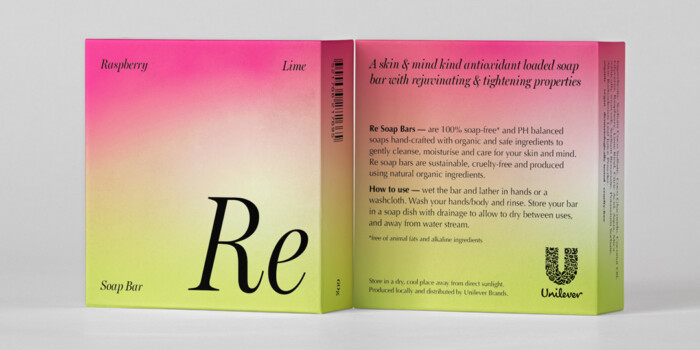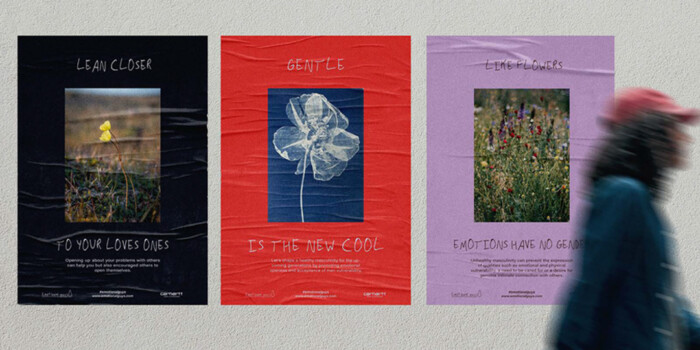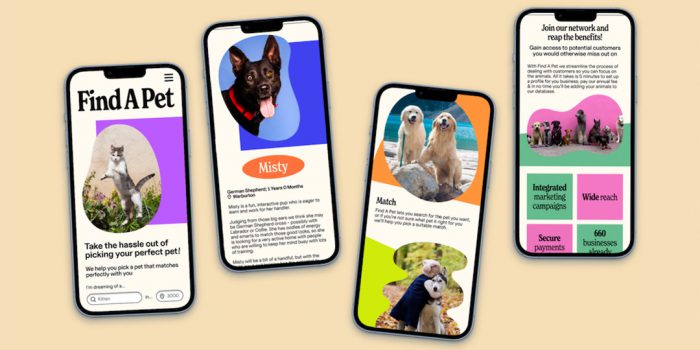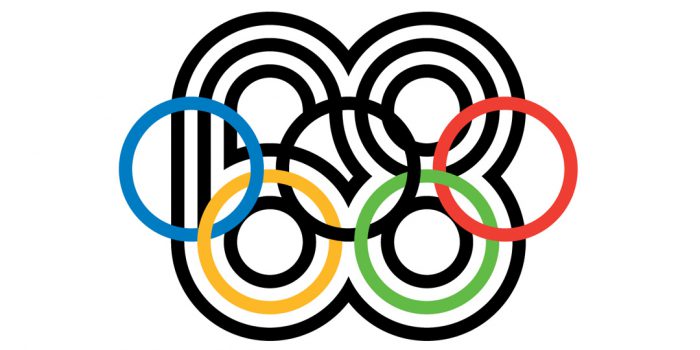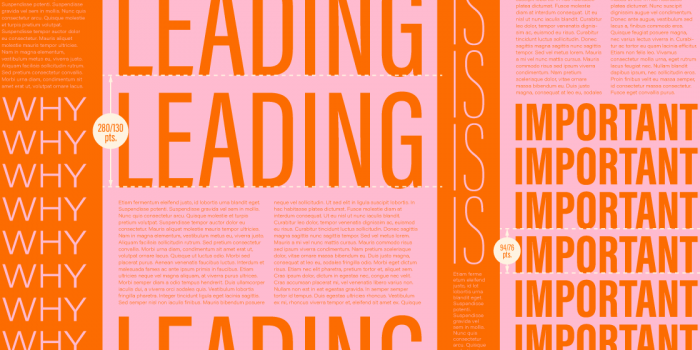How to Become a UX Designer in Less Than a Year (A Shillington Graduate’s Experience)

We are excited to welcome our New York graduate Irina Manning to share her journey to becoming a UX designer after studying at Shillington. She is the founder of Manning Labs, a digital design studio that creates everything from mobile apps to corporate websites and web applications.
I am a UX designer with numerous awesome clients and inspiring projects under my belt. It’s hard to believe that just five years ago I didn’t know a thing about UX design and worked as a teacher.
After graduating from one of the most prestigious universities in Russia, I taught foreign languages to children and adults. I loved it, I was good at it, but at some point I realized, that teaching was not a profession I wanted to pursue. While teaching is extremely important and highly rewarding, it is also not easy and not paid nearly as well as it should be.
So, I decided to switch careers. I just wasn’t sure what it was that I wanted to do. All I knew was, I needed something that 1) I liked doing, 2) I would be good at, 3) would be well-paid, 4) would give me an opportunity to find a job easily, 5) wouldn’t be too stressful, 6) would give me flexibility in my schedule, 7) I wouldn’t require years to learn. After a month of careful consideration, research and contemplation I decided to try conquering a career of a UX designer.
Here are a few reasons, why I picked UX design:
- UX design combines creativity with being technical. That was perfect for me as being a creative person, I really do enjoy solving technical problems. (Something I like doing and am good at—check and check)
- UX design is one of the highest-paid professions today. (Good salary—check).
- UX design is a hot rapidly developing field; a lot of companies are realizing the importance of quality user experience and are looking to hire good UX designers. (Finding a job easily—check).
- UX design is relatively stress-free. Given that you enjoy doing it, of course. (Low-stress level—check).
- Most of the time UX designers are free to work wherever and whenever they are the most productive. Be it at the office or at home, in the morning or in the evening, at a busy coffee shop or at the beach. As long as you can be present for meetings and meet deadlines. (Schedule flexibility—check).
- To learn UX design one doesn’t have to go to University or college for four or more years. I sure knew that after having spent five years at the University already, I didn’t want to go to school for years again. Certainly, there is so much to learn about UX design but it’s not like learning to be a doctor. So, I figured, by that point, I had enough discipline and persistence to be able to study a lot on my own. (Possible to learn quickly — check).
So, I chose UX design. Now, I needed a plan of how to master the basics of design relatively quickly. A very simplistic version of my plan was to learn the basics of design, find a job in the field and continue perfecting my skills while getting experience. Here are the steps I took:
1. Research and Preparation
Since I was coming into UX design from a completely unrelated area, I wanted to educate myself about the field. I wanted to know what graphic design is about, what the latest trends are and what potential employers were looking for. I found and signed up for several design newsletters (take a look at Creative Bloq for everything design related: great source of inspiration, information and latest design news). I followed popular UX publications on Medium (such as, for instance, UX Collective, Google Design or UX Planet to name a few). Try to look for UX podcasts too, if you are more of an auditory learner. So, I started reading a few articles a day to get myself acquainted with the basics of digital design.
2. Design school
While doing some reading on design, I started slowly researching quick but high-quality ways to get some theoretical and practical design knowledge. I had three main options: a college degree, an intensive course, online tutorials/books. Going to college was not an option—I didn’t want to spend another four years at a school.
Now, I knew that I had the necessary persistence could to learn the basics by reading books, articles and watching online tutorials. But online courses and books didn’t offer enough professional mentorship and practical exercises that I really wanted. So, I decided to take a more formal approach that self-studying but a less formal approach than a design degree. I chose to do an intensive design course.
I researched the heck out of design schools that offered such courses.
I ended up finding a great one—an intensive full-time three-month design course at Shillington School of Graphic Design in New York City. I have to admit the school is a bit pricey but it ended up being worth every dollar. Best investment in myself I have ever made.
Shillington School is absolutely brilliant. It gave me everything I needed to get started:
- Great knowledgeable teachers, who are supportive, encouraging, and passionate about design.
- Fantastic curriculum based on practical exercises and just enough (no more and no less) theory to get you going.
- Great in-depth knowledge and excellent command of the Adobe Photoshop, InDesign and Illustrator (they have recently added the Sketch App to their curriculum).
- Real life situations emulating working with a real client on real design briefs.
- Great talks were given onsite by renowned designers; Q&A by a panel of former students who told us about their success stories; field trips to famous art galleries and exhibits.
- Ability to work on group projects and interact with fellow (future) designers—so talented, creative and inspiring.
- Portfolio. Every one of us, students, has left the school with high-quality portfolios that we were proud to show to our potential employers.
- Last but not least—upon graduation, I had confidence in myself as a designer. I knew I could make it.
If you end up going with this sort of course—make no mistake, it really is VERY intensive especially in its final stage of portfolio creation. I barely had any free time for ANYTHING else besides design for the three months I was at Shillington. My friends didn’t see me. My husband was reminded of his bachelor days. And I did lose sleep (literally) for a few final weeks of the course (oh, the glorious days of the portfolio creation!) but it was all so worth it.
I started the course not knowing anything about design and I left with a lot of useful knowledge, a great portfolio and confidence that I can indeed make it in the design world.
3. Portfolio/Social Media Presence
Knowledge is important—I had the bare minimum taken care of. But one of the most important things for a new designer nowadays is knowing how to market yourself.
As I already mentioned we worked on our portfolios as the final part of the course. Those of us who knew that we’d be focusing on a digital design created interactive digital portfolios.
One of the final projects was to create a brand for yourself. The outcome of that project for me was my personal logo, business cards and website hosted on one of the platforms such as Behance, Square Space (my personal choice) and the like.
So, coming out of Shillington, I had all the tools I needed to present myself and my work to potential employers. All I needed to take care of was social media presence. I won’t bore you with what I did. Social media marketing strategy is an individual matter. You should tailor it to your own professional needs. Pick a social network that people from your field prefer. Post your projects on Instagram. Become an active participant in discussions on Twitter. Contribute to the community by answering questions on Quora or Reddit. Write articles on Medium. Plenty of opportunities to get online visibility!
4. Volunteer projects (to go beyond school projects)
So, now I had a design certificate, personal brand identity, business cards, active social media presence, and a portfolio. Composed 100% of student projects… Ouch. I needed real work experience, real clients, real projects under my belt. But who wants to hire a recent graduate with no tangible work experience. Being the perfectionist and idealist that I am, I wouldn’t even dare to look for paying clients at that point. But… I didn’t mind looking for non-paying clients. In other words, I looked for every opportunity to volunteer! I offered my design help to small companies, startups, people I knew, people my husband (who, by the way, is a brilliant developer—Hi, Nick!—and happened to work on his startup at one of the biggest co-working spaces in New York City) knew.
For a month or two I actively did free design work for small tech startups which gave me amazing work experience without putting too much professional pressure on me. In other words, since my clients were receiving design work for free, I knew their expectations wouldn’t be too high and I wouldn’t be feeling too self-conscious about potentially making minor design mistakes.
Meanwhile, I got my first paying client… Felix Gilman, a renowned and incredibly talented writer and a good friend of mine, trusted me to re-design his website. That endeavor was a huge responsibility — Felix was the last person I wanted to let down. I did my best by designing his website and got my first paycheck. That felt good and gave me the necessary confidence in my skills. Besides the satisfaction of working on a real project, for an amazing client and being paid for it I got something else out of that project.
5. HTML/CSS
…it brought me to learning HTML and CSS.
All my volunteer projects before consisted purely of design work. I worked alone without having to collaborate with any developers. My first “real” project was different. Not only was I creating the design—I also had to oversee the implementation of the mockups by the developer. I didn’t know ANYTHING about how websites are built post-design. Programming was something incredibly foreign to me. I won’t lie, that first experience of me trying to collaborate with a developer was hard. I managed but it did make me realize one thing. If I wanted to be a good UX designer, I needed to get to the bottom of it, I needed to understand the technical part of creating a digital product.
Since my goal was to just get acquainted with the process and not learn it in depth, I decided to try studying on my own.
I researched good HTML/CSS books and purchased one. I used the book HTML5, Teach Yourself Visually. It doesn’t have a lot of reviews and only four stars on Amazon but I can vouch for and highly recommend it. For the purpose that I had in mind, it did the job. It introduced me, a complete beginner, to the basics of HTML and CSS painlessly. The book is very visual and has lots of practical exercises.
Having worked through the entire book, I finally had a clear idea of how websites are built, and I knew, I could be much more efficient designing for digital and it would be much easier for me to collaborate with developers from now on.
6. Java Script
After having learned the basics of HTML and CSS I had a much better understanding of how developers think. However, I realized that it wasn’t quite enough for me. Since HTML is a markup language and not a real programming language, I personally felt the need to dig a little deeper. And that brought me to studying JavaScript. I carefully studied and worked through all the practical exercises of A Smarter To Learn JavaScript. The book is absolutely brilliant. I highly recommend it to all (future) digital designers who want to get to know this very important programming language. The information is broken down into digestible pieces, the theory is presented in a very structured and clear way and the online practical exercises help to reinforce and memorize all the concepts in a fun and (almost) effortless way. I tried other books too, but they were rather complex for a complete beginner like me and quite honestly left me wondering if I was even capable. I was capable. It was just a matter of finding a good beginner book.
Learning JavaScript has completely transformed the way I thought about digital design. If you are a budding designer who is planning to go into UX, web or mobile design — do yourself a favor and learn some programming. As digital designers, we have to interact with development teams a lot. Trust me, understanding the developer’s thought process and needs are just as important in our profession as being an outstanding designer.
7. Networking
Now that I knew I had enough design knowledge and experience, more (and better) projects in my portfolio, and some understanding of basic programming, it was a matter of getting my name out there.
I already mentioned how important it is to be active in the online creative/tech community. At the beginning of my career, I certainly didn’t feel I had enough authority to write articles. I simply needed more experience in order to have things to write about. But I tried my best to follow industry influencers on Twitter, followed interesting UX subreddits and read a lot of articles. Whenever I could I also tried to comment on posts.
It’s not always easy to express your honest opinion in the beginning when you just don’t have enough experience or confidence but it is important to try. Little by little you will know who are the people worth following, you will surely have something to say and you will even feel at some point (I know I did after a few years of my professional UX design life) that you know and experienced enough to share your knowledge, give new designers advice, mentor and teach.
Networking online is important. But networking in person is even better. By all means, join meetup.com and go to design/UX/tech meetups in your area whenever you can. I was fortunate enough to be living in New York City when I was starting my UX design career—oh did I have plenty of opportunities to go to fantastic meetups. There is an abundance of different interesting groups to join. Even if you don’t live in a big city. Go to design meetups as often as you can. You will meet so many interesting talented people from your industry. Don’t be intimidated: along with established designers there will be a lot of new designers there, who are only starting out, just like you.
Another important point—try being proactive and participate. Participate in discussions, ask questions, talk to people, ask them what they are up to, tell them what you are working on at the moment, offer help, exchange contact information and keep in touch after the meetup too. You never know: the person you are talking may just by chance be looking for a designer. I know I wouldn’t have gotten my first real job if I hadn’t started talking about my career-changing experience to this developer I knew.
8. First job
So, one day, a few months after my graduation from the design school, I was talking to this developer I knew. We were talking about how extremely important it is for a designer to know how the code is written. And that’s how I got my first job.
Turned out the Fortune 500 company he was working for at the time had been looking for a junior front-end developer with a design background. I seriously doubted I could pull it off as my front-end development skills were very basic. He was quite confident that I would as they needed someone to be the bridge connecting the design and the development teams, someone who could “speak both languages”.
The rest was history. He told his manager about me, I was invited for an interview with HR and then another interview with the hiring manager. And that was it. I got my first job offer. It was a very junior position, with a very basic salary, but at a global international company. At that point, I didn’t care about the money. I needed the experience. And oh—did I get a ton!
Getting a job wasn’t the end of it for me. It was just the start. My initial goal had been to become a UX designer. My position title read “junior front-end developer.” So, I continued on.
9. Work hard and be proactive
At Richline Group Inc I mostly did front-end development work in the beginning. Was it hard? Incredibly. Did I know how to do everything? Not at all. But I was a quick and willing learner. I was determined. I researched solutions to programming questions. I asked questions. I looked at my code at home after hours and asked my developer-husband to explain things to me.
I powered through the first couple of months at the job and, finally, my determination paid off. It did get easier. I didn’t have to ask so many questions anymore.
However, I wasn’t doing as much design work as I would have wanted to. So, I decided to proactively ask for it. Even though it wasn’t necessarily in my job description. I did an extensive analysis of one of the existing websites that, I thought, was somewhat outdated and needed some UX and visual design work. I wrote up a detailed document, very quickly mocked up my suggestions for improvements and presented it at one of the meetings. I got a go-ahead on that one and since then was responsible for re-designing that entire digital marketing campaign. It goes to show how extremely important it is to show initiative.
Since that time I gradually started transitioning into a web-designer position, in addition, I assisted with some front-end development work. I re-designed and designed numerous websites for Richline Group, and ended up being a lead designer for a major re-design of the main company website. It was a huge responsibility and by the end of that project, I was extremely proud of the result.
10. Meanwhile—Online courses/learn from everyone around you/be UX enthusiast.
While working at Richline I also NEVER stopped learning. I constantly was learning something new: I read books, articles, blogs, listened to podcasts. I was the most active user of the company lynda.com profile! I love that website. It has so many high-quality courses on everything from visual design to UX design to marketing. I couldn’t recommend it more highly.
I also learned from everyone and everything on the job. Some talented colleague did something awesome? I made a mental note. Did someone handle a situation well? I noticed. I myself or someone else made a mistake? I remembered and never did it again.
In other words: learn, learn, learn. Never stop learning. UX design encompasses so many fields and skills from psychology to copywriting to marketing to programming to name a few. A UX designer can never learn enough, no matter what your level of experience is. At this point, I have been in the field for years and I still learn something new every single day and that is not an exaggeration.
The last thing I’ll add to this point is this: companies, especially big corporate firms, have no time for introducing changes. It’s a cliche, but really: “be the change you want to see”. When I started that first job I didn’t hear the words “user experience” once. But I was an active proponent of using various UX design techniques in our work process, introduced numerous new tools, initiated elements of usability testing. I was a huge UX design proponent and it proved to be contagious. My manager was happy to delegate promoting UX practiced within our team to me. I did the best I could and yet again did more than my job description called for. I did everything a UX designer would do. And finally…
11. Become a UX designer
…finally, I was promoted to become a user experience designer. Within one year of making a decision to change careers, I reached my goal. I never thought it possible but it was.
I have been in UX for over five years today. My learning path hasn’t always been easy, but I am proud to say I have come a long way. I have met and worked alongside wonderfully talented people, on dozens of inspiring projects, for companies ranging from successful startups to fortune 500 companies, in New York City and in Europe. I have launched several profitable projects of my own and started a design agency. I never stop learning and am continuing to grow personally and professionally every day.
I’ve never regretted the decision to become a UX designer. I love my job. It has enriched my life immensely. If you are thinking of changing careers but are unsure or scared. Don’t be. It may not be easy but you can do it. Just believe in yourself, have a plan and follow through!
Huge thanks to Irina! This article was originally published on Medium.
Want to win some amazing prizes and stay in the loop with all things Shillington? Sign up to our newsletter to automatically go in the draw.


